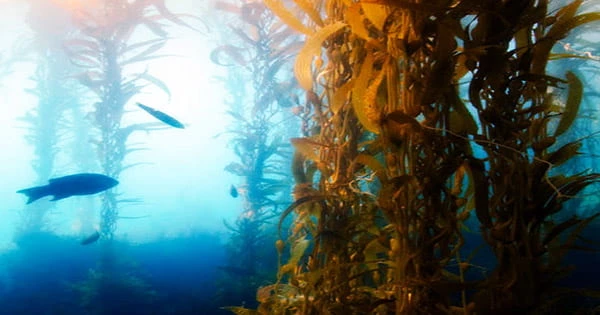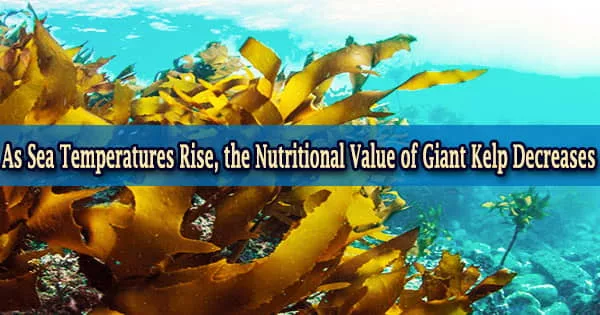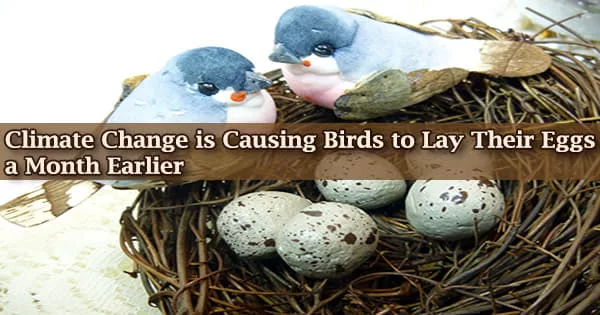The ecology of the temperate, shallow, nearshore seas where giant kelp (Macrocystis pyrifera) thrives is dependent on it as a basic species. When the fast-growing species thrives, so do the populations that rely on it for food and shelter. The world’s seas are warming, with average temperatures rising year after year as a result of human-caused global warming.
Giant kelp has shown to be resilient (so far) to some of the stressors brought on by climate change, such as severe storms and ocean heatwaves, which is good news for those concerned about the alga’s ability to support the legions of fish, invertebrates, mammals, and birds that rely on it for survival. However, according to a recent study published in the journal Oikos, gigantic kelp’s capacity to withstand high temperatures may come at the expense of its nutritional content.
We found that those changes were associated or correlated with changing seawater temperatures. From a big-picture perspective, this is critical since kelp is a main food source for a variety of organisms.
Heili Lowman

“The nutritional quality or the amount of nutrients in the kelp tissue seems to be changing,” said the study’s lead author Heili Lowman, a biogeochemist with the University of Nevada, Reno, who conducted this research as a Ph.D. student in the Department of Ecology, Evolution and Marine Biology at UC Santa Barbara. “We found that those changes were associated or correlated with changing seawater temperatures. From a big-picture perspective, this is critical since kelp is a main food source for a variety of organisms.”
“I guess you could call it one of the more hidden effects of ocean warming,” said study co-author and graduate student researcher Kyle Emery. “We haven’t necessarily lost kelp in places that have had these big temperature increases, but the kelp there has declined in terms of its nutritional content. So although it’s still there, it’s not able to provide the same function as when temperatures are lower.”
Long-term data collected at UCSB’s Santa Barbara Coastal Long-Term Ecological Research (SBC-LTER) site, which consists of numerous kelp forests in the Santa Barbara Channel, revealed these results on ocean warming’s hidden impacts on kelp. Researchers have been able to analyze seasonal changes in nutrient content and discover major shifts thanks to data collected over nearly two decades.
“The temperature of the seawater and nutrient availability are really closely coupled in the Santa Barbara Channel, and we’ve known that for some time,” Lowman said.
In general, lower temperatures drive nutrient-rich waters up from the depths, whereas nutrients in the shallows and upper ocean, notable nitrogen, become sparse during the warmer seasons.
“Physiologically, kelp plants can’t store nitrogen for longer than a couple of weeks, so whatever’s happening around them in the water they’re going to respond to very quickly because they need a constant supply of nitrogen to grow and to continue to reproduce,” she said.
Knowing this tendency, the researchers looked at how nutrient content may change over time as ocean temperatures increased. They did so by analyzing data from the monthly primary productivity sample done in the waters of the SBC LTER.
“As part of that sampling, kelp blades are collected from these sites, brought back to the lab, and then processed for carbon and nitrogen content,” Emery explained.
According to the article, the nitrogen concentration of gigantic kelp tissue decreased by 18 percent throughout the 19-year period covered by the SBC LTER, with a comparable rise in carbon content.
This apparent drop in nutritional value is bad news for kelp consumers in and around the Santa Barbara Channel, which includes sea urchins and abalone in the water, as well as intertidal beach hoppers and other invertebrates that eat the kelp wrack that washes up on the beach.
“As a result, urchins, for example, might go in search of a lot more kelp and that could cause a shift in certain places, potentially from a kelp forest to an urchin barren, if they’re just mowing down the reef looking for more food,” Lowman said.
Animals that eat kelp may exert more energy in order to consume enough food to meet their nutritional needs. While urchins may go looking for more food, customers on the beach are stuck with what they get, according to Emery.
“If you have greater demand, but there’s not more kelp coming in, that poses a pretty challenging situation for them, whether it’s being underfed or through population declines,” he said.
The consequences might spread across the food chain in both situations, according to the researchers: Lower-nutrition kelp, for example, might result in smaller, fewer, and possibly less healthy beach hoppers, resulting in less food for the shorebirds that consume them. Less food for urchins and abalone in the ocean might mean less food for their consumers, such as fish, lobster, marine otters, and people.
“Our results raise a lot of really interesting open-ended questions and suggest a lot of far-reaching effects,” Emery said.
The researchers are considering expanding the study’s regional-scale after investigating potential correlations between seawater temperature and nutritional content.
“The next step would be thinking about what all is playing into determining the nutritional content and then how might we then be able to predict it into the future,” Lowman said.
















